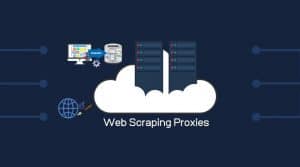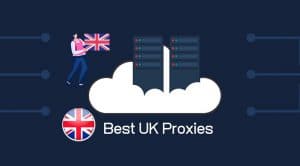Rotating residential proxies are quite different from their static counterparts but not many are aware of their difference. If you are interested in knowing the difference between static and rotating residential proxies then come in now to learn more.
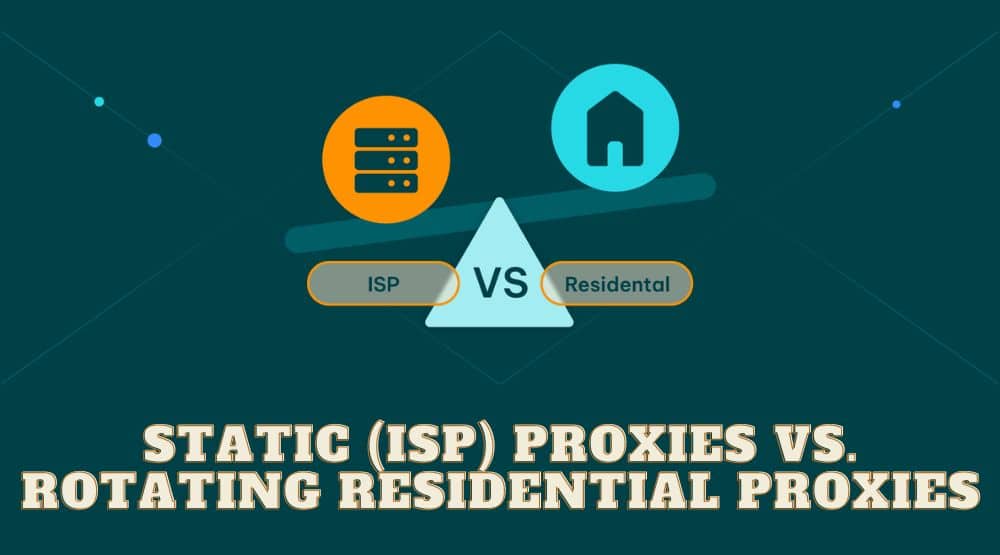
When one mentions residential proxies, the ones that come into the mind of many proxy users are the rotating residential proxies. They are the most used, most popular, and the more readily available, and even affordable out there.
They are the types that were first introduced into the market also. However, rotating residential proxies are not the only residential proxies. There are also static residential proxies which are also increasingly becoming popular. In this article, I will be taking a look at some of the differences between rotating and static residential proxies.
These differences are the reasons they are used for different tasks. While there are some overlapping features and usage they have, these two types of residential proxies are different in some aspects. Before I start discussing the differences between them, let's take a look at an overview of residential proxies and the similarities between the two types.
Overview of Residential Proxies (Rotating Vs Static)

Residential proxies are the type of proxies that assign residential IP addresses to the requests of their clients. Residential IP addresses are owned and distributed by Internet Service Providers (ISPs) and used by regular Internet users for accessing websites. These IPs are seen as legitimate and used by end-users of the Internet. They are different from datacenter IPs that are owned by data centers or hosting services.
Because they use residential IPs, they are known to be undetectable compared to datacenter proxies. There are two types of these residential proxies (static and rotating) and they differ in a lot of aspects. The only known similarity to you as an end user is that they all use residential IPs. Apart from this, they are quite different in the other aspects.
Differences Between Static (ISP) and Rotating Residential Proxies
In this section of the article, I will be taking a deeper look at the differences between the ISP proxies and the more popular rotating proxies otherwise known as backconnect proxies. The differences will be in the area of IP rotation, source of IP address, performance, session management, availability, use cases and application, location coverage, and a few other minor aspects.
-
IP Rotation
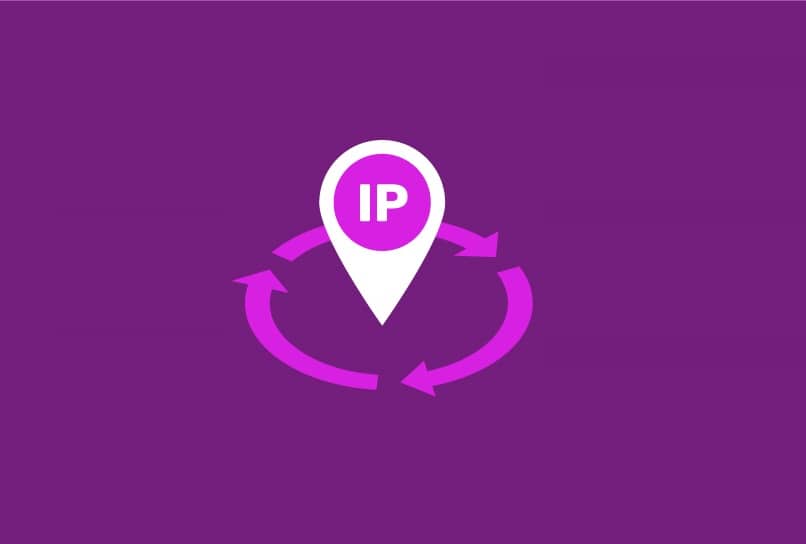
If there is one area that the difference between static residential proxies otherwise known as ISP proxies is different from the rotating counterparts, then that area has to be IP rotation.
From the name of these two groups of residential proxies, you can tell that static residential proxies maintain the same IP address. This means that you are given a proxy host and port that does not change the IP assigned to them; much like how datacenter proxies operate. The only difference between static residential proxies and datacenter proxies is the source of their IP addresses.
For rotating residential proxies also known as backconenct proxies, the IPs are meant to change. You can only maintain the same IP address for a few minutes up to a few hours in some cases before the IP is changed whether you like it or not.
This is by design informed by the lack of control of the providers over the IPs. For this reason, providers maintain a pool of IP addresses and assign to a customer, a proxy gateway. Using the gateway endpoint, you are given access to the whole pool of IP addresses or a subset of it with an IP assigned to you randomly at a time.
-
Source of IP Addresses
Another area these two differs is in the source of their IP addresses. For rotating residential proxy networks, their IP addresses are usually sourced via P2P networks. These are networks of computers that have an app installed in them. This makes it possible for the proxy networks to route their customers’ requests through them and by doing this, make use of their IP addresses.
The app can be installed legitimately or forcefully installed on a device using malware. But the information you need here is, rotating residential proxies route their requests via the devices of real Internet users in other to use their IP addresses.
The case is different for static residential proxies. For these, the provider has some form of business relation with ISPs which makes them get IPs directly from ISPs.
This direct connectivity with Internet Service Providers (ISPs) gives them better control over the IP addresses compared to their rotating residential proxies counterparts. It is also from this feature that it got its name ISP proxies from since the residential IPs are given directly to them by ISPs.
-
Proxy Performance
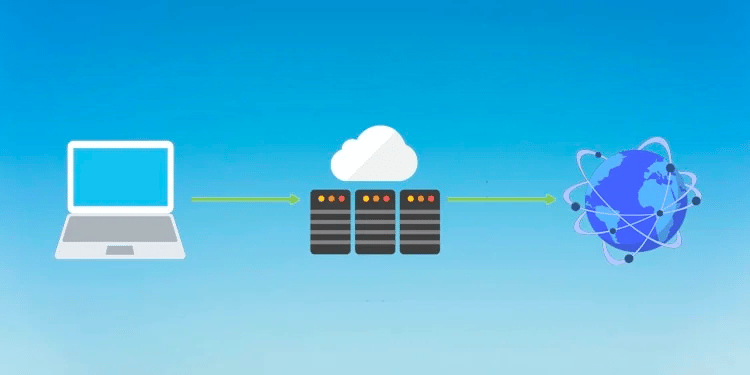
There is an obvious difference in the performance of the two types of proxies. Generally, the rotating residential proxies are regarded as the slower proxies while ISP proxies are regarded as fast. And this is because of their source of IP address and the level of control they have over the IPs.
First, let me start with the static residential proxies. These proxies have direct connectivity with ISPs which creates a one-hop connection with their IP address providers. The IPs are hosted on datacenter infrastructure which is high-powered. This makes it possible for performance to be high and sustained. If an ISP proxy network is slow, it is because of its own doing.
In the case of rotating residential proxies, the situation is different. There are at least two bottlenecks that affect its performance. The first one is the fact that rerouting is done twice — first is from your device to their server and then from their server to the device that serves as the exit node to your target website.
The second bottleneck that impacts performance negatively has to do with the low-powered nature of the devices that serve as exit nodes since they are regular consumer devices such as mobile phones, low-powered PCs, and even some IoT devices. While ISP proxies can go as high as 50+ Mbps, rotating residential proxies that have a speed of 15+ Mbps are considered fast.
Learn more, Which Proxy Provider Is Fastest?
-
Session Management
It might interest you to know that both the static residential proxies and rotating residential proxies all support session management. Which means you can use both to manage your account. However, there is still a difference in how they operate, and this is tied to their IP rotation system.
For static residential proxies, it is known that their IP address does not change. And with this, you can also tell that you can maintain the session for as long as possible which is decided by your target website.
In the case of rotating residential proxies, the session management system can be unpredictable sometimes. The consensus here is that you can maintain a session for a while before your IP address is changed.
And for most providers, you can see that you can maintain sessions between for 10 minutes up to 30 minutes. However, where the problem lies is in the unpredictable nature of the proxies. They can go offline which will but your session short as a new IP is assigned to your request. You need a system to monitor this closely as this could lead to your account getting blocked for unexpected activities.
Learn more, Sticky Vs. Rotating Sessions (Proxy Rotation)
-
IP Availability and Cost

One other area you can differentiate the two types of residential proxies is from their availability which inevitably impacts their pricing. The most readily available among the two are the rotating residential proxies. It is quite common to see a proxy network have millions of IP addresses. Take, for instance, Bright Data has over 72 million IP addresses, Smartproxy has over 40 million IPs, while Smartproxy offers a pool with 31 million IPs.
Even the smaller providers like Proxy-cheap and Hydraproxy have over 5 million IPs each. In fact, the number of IPs a rotating residential proxy network has is an flex and is usually displayed on the homepage of the provider.
This is different from static residential proxies that sell you individual IPs and in most cases, fewer in number. Picking Bright Data as an example, while its rotating residential proxies have 72 million, the static residential proxy network has 700K IPs.
This is quite smaller. And only Bright Data and a few others even talk about the number of static IPs they have. The abundance of IPs for rotating residential proxies makes them more affordable compared to static residential proxies.
-
Location Coverage

One other area that is not often mentioned when one is looking at the differences between the 2 residential proxy types is their area coverage. This is partly because both of the proxy types do have the potential to support as many locations as they want.
But one shines brighter in this regard. When it comes to location coverage, rotating residential proxies are the leaders. This is because providers do not need to have any infrastructure in those regions that they own. All they need are the devices of regular Internet users in those regions to install their software on.
This is the reason most rotating residential proxies have support for at least 100 countries across the globe — the investment is quite minimal. On the other hand, only a few static residential proxies support up to 20 countries.
Most of the static residential proxies support less than 3 countries. This is because they need a datacenter infrastructure or a partner that will host their infrastructure in their datacenter in any location they want to have a presence. They then will also have to get IPs from the ISPs in those regions. This is why static residential proxies are the most difficult to set up out there.
Which One Should You Use — Rotating or Static (ISP) Residential Proxies?
The answer boils down to what you need proxies for as each of these 2 types of residential proxies do have what they can best be used for. Let's take a look at the use case of rotating residential proxies.
Rotating residential proxies change IPs randomly and as such, are best suited for tasks that require IP change frequently. This includes botting activities like web scraping. If you get rotating residential proxies that can maintain sessions for up to 10 minutes and even 30 minutes, you can do some form of account management with bots using them too.
For static residential proxies, their use case is mostly in the aspect of account management. If you need proxies to manage your account on PayPal or Amazon, changing IP too quickly and frequently is a recipe for suspicion that might lead to a ban.
For that, you will need static residential proxies to maintain IPs for as long as you want. Because of their speed, they are also perfect for playing online games and streaming on Netflix and Hulu, among others. They are also used for copping sneakers.
Conclusion
Residential proxies have made a name for themselves because of their undetectable nature and extensive location support. However, when choosing a residential proxy network for your task, you need to know that there are two types — the ones that rotate IPs and the ones that maintain the same IP.
You need to choose the one that is appropriate for your task. Already, I have already mentioned above when to use either rotating or static residential proxies. Using the wrong residential proxies might ruin your project.

